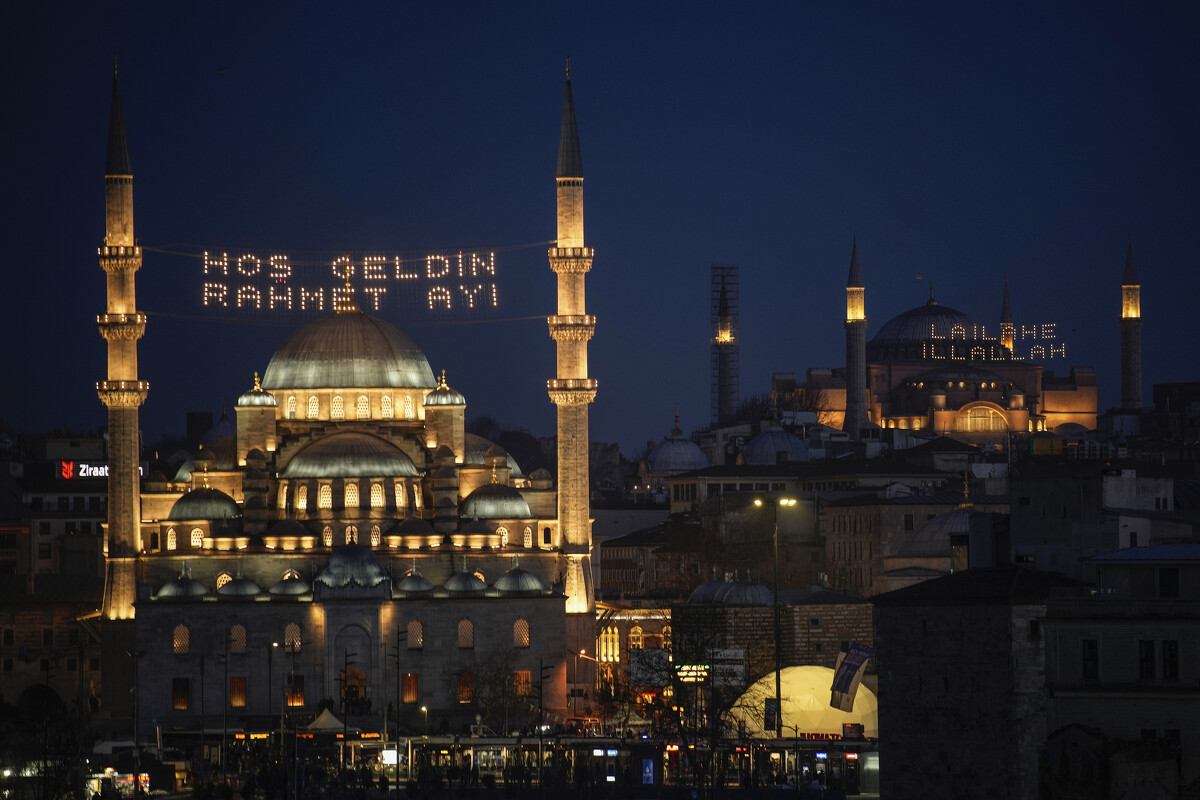
Light messages installed in the Yeni mosque, or New mosque, left, read in Turkish "Welcome month of mercy," and in Hagia Sophia mosque "There is no God but Allah" ahead of the Muslim holy month of Ramadan, in Istanbul, Turkey, Sunday, March 10, 2024. (AP Photo/Emrah Gurel)

Mahya master Cemil Buyurkan works in the installation of a lights message at the top of one of the minarets of the Suleymaniye Mosque in Istanbul, Turkey, Wednesday, March 6, 2024. Mahya is the unique Turkish tradition of stringing religious messages and designs between minarets. (AP Photo/Emrah Gurel)
ISTANBUL (AP) - In the heart of Istanbul, on top of the towering minarets that dot the city's skyline, 68-year-old Kahraman Yildiz toils away at a craft that has illuminated the Muslim holy month of Ramadan for generations.
Yildiz, a master of Mahya, the unique Turkish tradition of stringing religious messages and designs between minarets, is facing the twilight of a practice deeply ingrained in Turkish culture that is also taken for granted.
For half a century, Yildiz has been a guardian of this art form, creating intricate designs that light up the night sky, encouraging faith and charity among observers. His works carry messages that are meant for the faithful during Ramadan, a time of reflection and community.
However, with no apprentice as a successor in sight, the future of Mahya hangs in the balance.
Officials saw the crescent moon Sunday night in Saudi Arabia, home to the holiest sites in Islam, marking the start of the holy fasting month of Ramadan for many of the world's 1.8 billion Muslims. The sacred month, which sees those observing abstain from food and water from sunrise to sunset, marks a period of religious reflection, family get-togethers and giving across the Muslim world. Seeing the moon Sunday night means Monday is the first day of the fast.
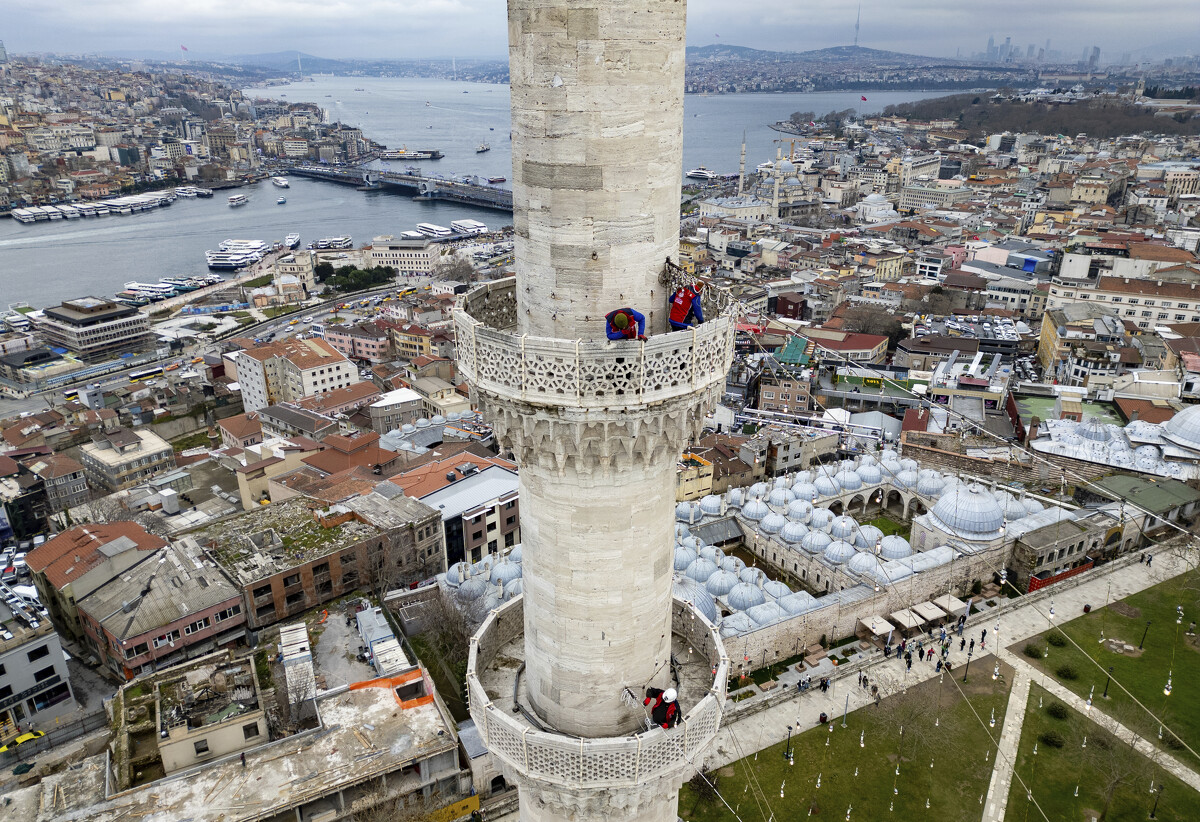
Mahya masters work in the installation of a lights message at the top of one of the minarets of the Suleymaniye mosque ahead of the Muslim holy month of Ramadan, in Istanbul, Turkey, Wednesday, March 6, 2024. Mahya is the unique Turkish tradition of stringing religious messages and designs between minarets. (AP Photo/Emrah Gurel)
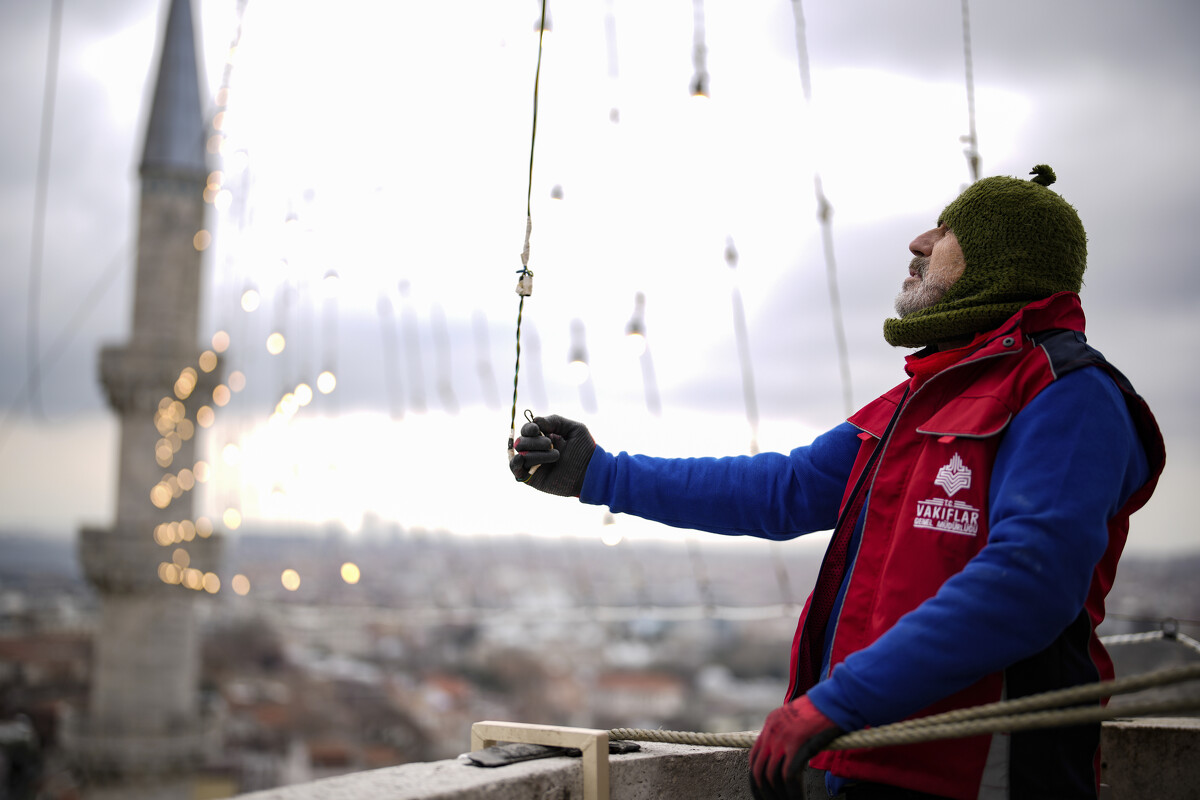
Mahya master Kahraman Yildiz works in the installation of a lights message at the top of one of the minarets of the Suleymaniye mosque ahead of the Muslim holy month of Ramadan, in Istanbul, Turkey, Wednesday, March 6, 2024. Yildiz, a master of Mahya, the unique Turkish tradition of stringing religious messages and designs between minarets, is facing the twilight of a practice deeply ingrained in Turkish culture that is also taken for granted. (AP Photo/Emrah Gurel)
The Mahya art form is thought to be at least 400 years old, originating in the time of the Ottoman Sultans and originally prepared with oil candles.
According to Yildiz, the ancient tradition not only served as a visual spectacle but also carried spiritual messages. "At a time when there was no television, cinema, or newspapers, Mahyas existed as the visual medium," he said.
Yildiz took on the mantle after his mentor, the last Ottoman Mahya, passed away. The transition from oil candles to lightbulbs was done during his mentor's time.
Although countless mosques in Turkey hang up Ramadan lighting with religious messaging and some even use LED lighting, only nine still benefit from the traditional Mahya craft and Yildiz. All nine of these mosques are historical Ottoman mosques.
"I take a list of the appropriate text and write them into the template. ... We create a string of writing and organize the bulbs. Then we set up a mechanism between the minarets and throw our ropes," Yildiz explained, shedding light on his methodology.
Despite his dedication, Yildiz is concerned about the future of Mahya.
"I hope this art will never end, it is a 400-year-old Ottoman art, and it is a Turkish invention," he said, adding that he would gladly pass along his trade to the younger generation if they were willing.
As Yildiz rushes up and down the slender minarets of Grand Mosques to light up the Istanbul skyline every Ramadan, the future of Mahya remains uncertain, with no apparent successor in sight. Yet, what is certain is his commitment to keep his craft alive and lift up spirits with his messages.
___
Associated Press writer Mehmet Guzel contributed from Istanbul.

Mahya masters work in the installation of a lights message at the top of one of the minarets of the Suleymaniye mosque ahead of the Muslim holy month of Ramadan in Istanbul, Turkey, Tuesday, March 5, 2024. Mahya is the unique Turkish tradition of stringing religious messages and designs between minarets. (AP Photo/Emrah Gurel)

Light bulbs rest in a bucket as Mahya masters work on a lights messages installation at the top of one of the minarets of the Suleymaniye mosque, in Istanbul, Turkey, Wednesday, March 6, 2024. Mahya is the unique Turkish tradition of stringing religious messages and designs between minarets. (AP Photo/Emrah Gurel)
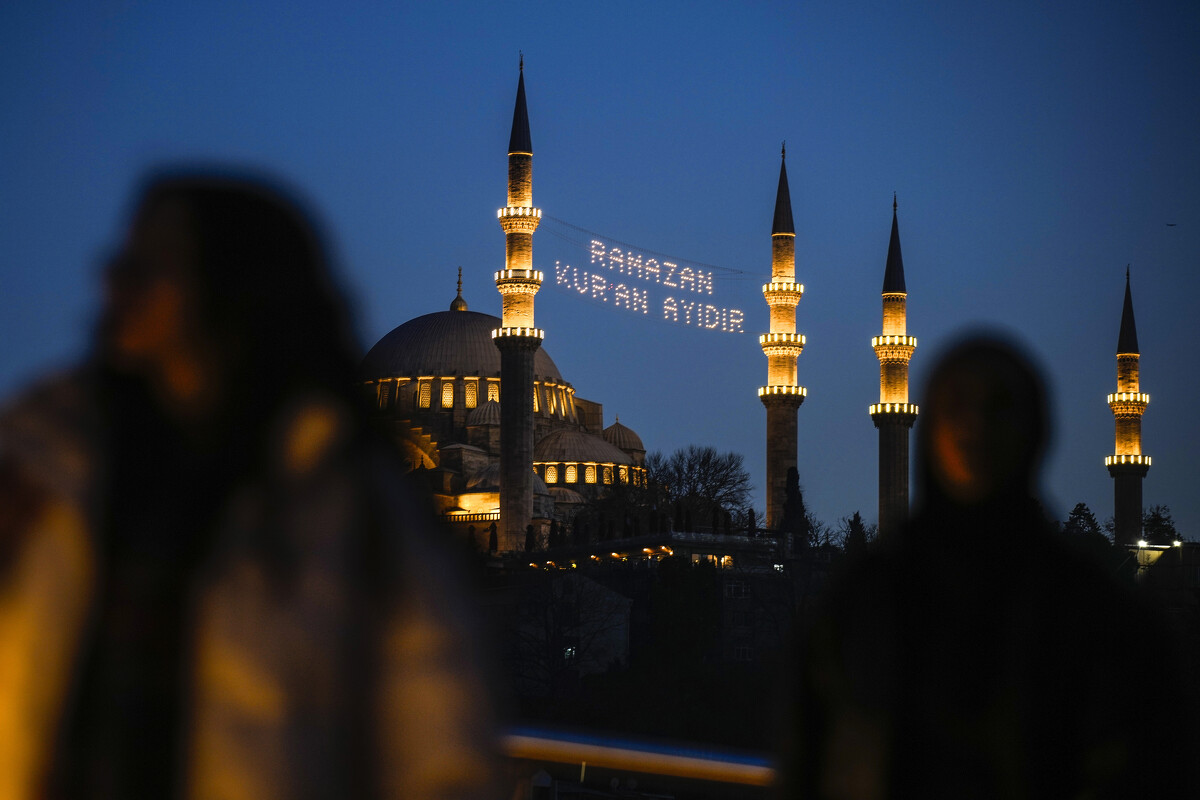
A message in lights is installed in between the minarets of the Suleymaniye mosque ahead of the Muslim holy month of Ramadan in Istanbul, Turkey, Sunday, March 10, 2024. The message reads in Turkish "Ramadan is the month of Quran." (AP Photo/Emrah Gurel)
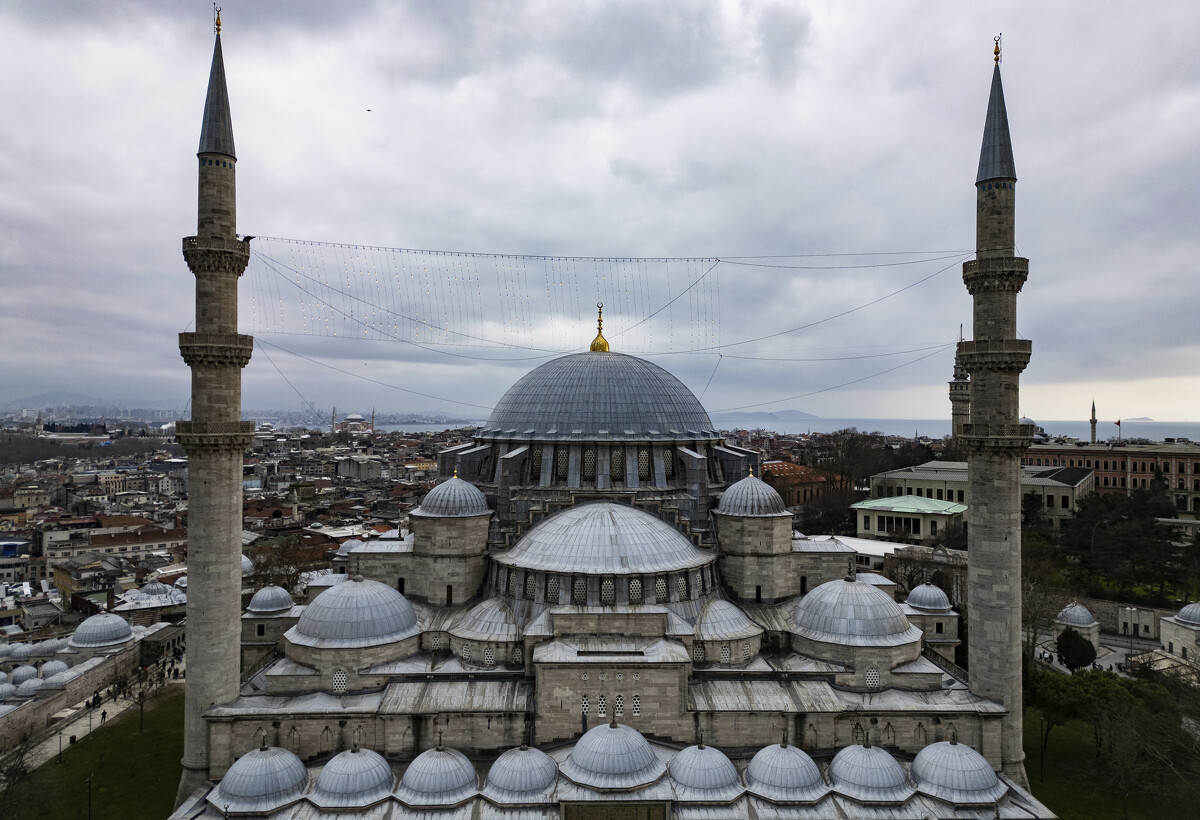
Mahya master Kahraman Yildiz, top left, works in the installation of a lights message at the top of one of the minarets of the Suleymaniye mosque ahead of the Muslim holy month of Ramadan, in Istanbul, Turkey, Wednesday, March 6, 2024. Yildiz, a master of Mahya the unique Turkish tradition of stringing religious messages and designs between minarets, is facing the twilight of a practice deeply ingrained in Turkish culture that is also taken for granted. (AP Photo/Emrah Gurel)
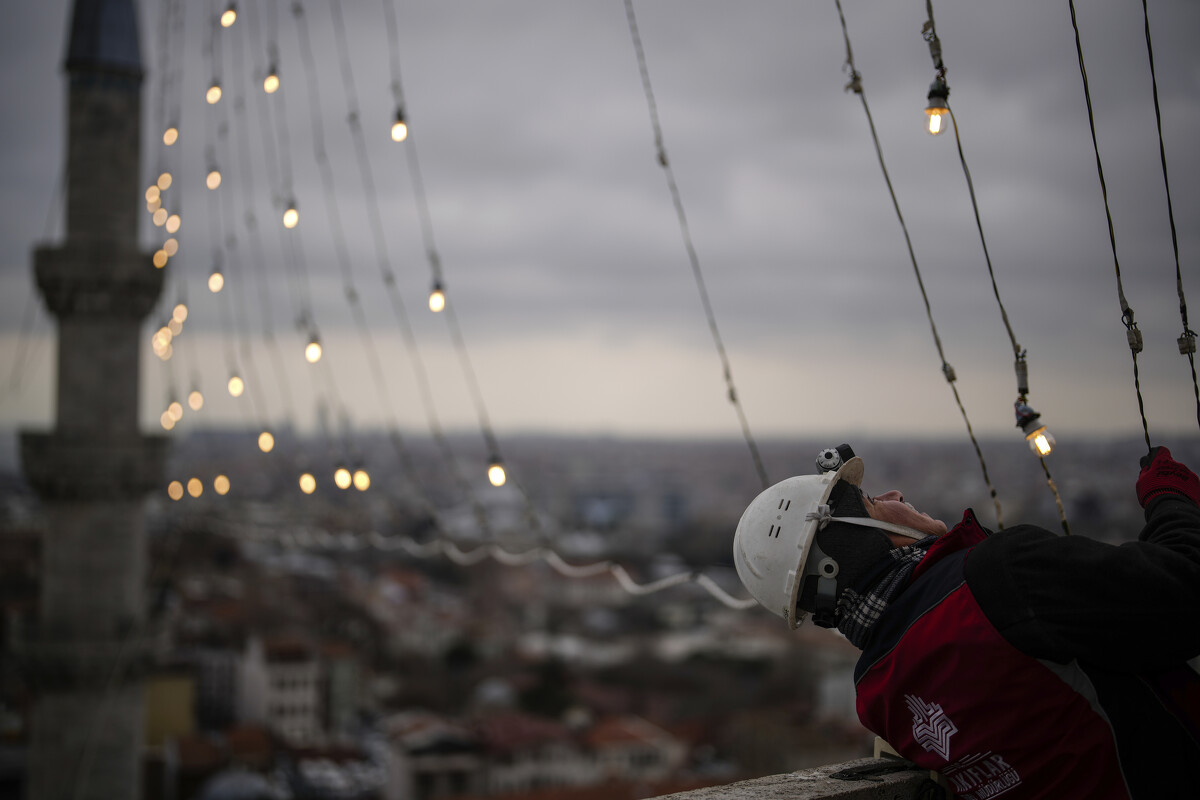
Mahya master Cemil Buyurkan works in the installation of a lights message at the top of one of the minarets of the Suleymaniye mosque ahead of the Muslim holy month of Ramadan, in Istanbul, Turkey, Wednesday, March 6, 2024. Mahya is the unique Turkish tradition of stringing religious messages and designs between minarets. (AP Photo/Emrah Gurel)
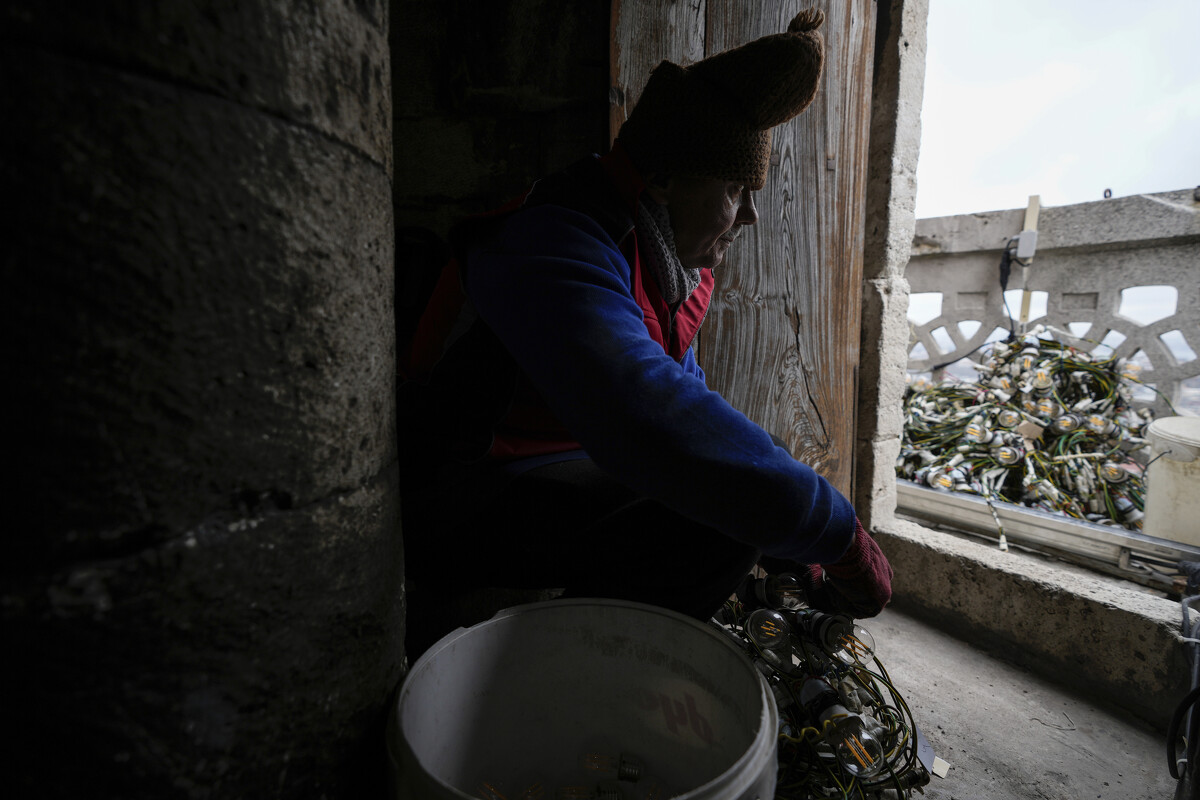
Mahya master Ilyas Tosyali works in the installation of a lights message at the top of one of the minarets of the Suleymaniye mosque ahead of the Muslim holy month of Ramadan, in Istanbul, Turkey, Wednesday, March 6, 2024. Mahya is the unique Turkish tradition of stringing religious messages and designs between minarets. (AP Photo/Emrah Gurel)
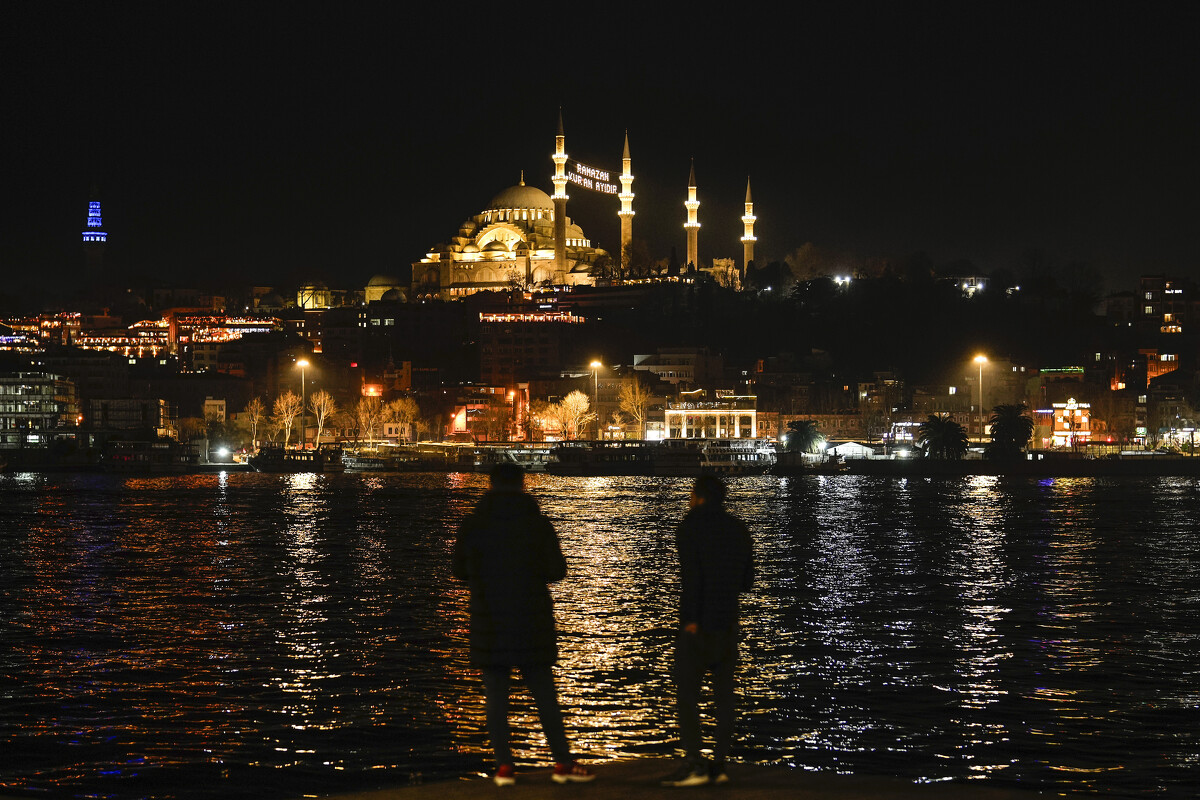
Lights message installed in between the minarets of the Suleymaniye mosque reads in Turkish "Ramadan is the month of Quran" ahead of the Muslim holy month of Ramadan in Istanbul, Turkey, Sunday, March 10, 2024. (AP Photo/Emrah Gurel)
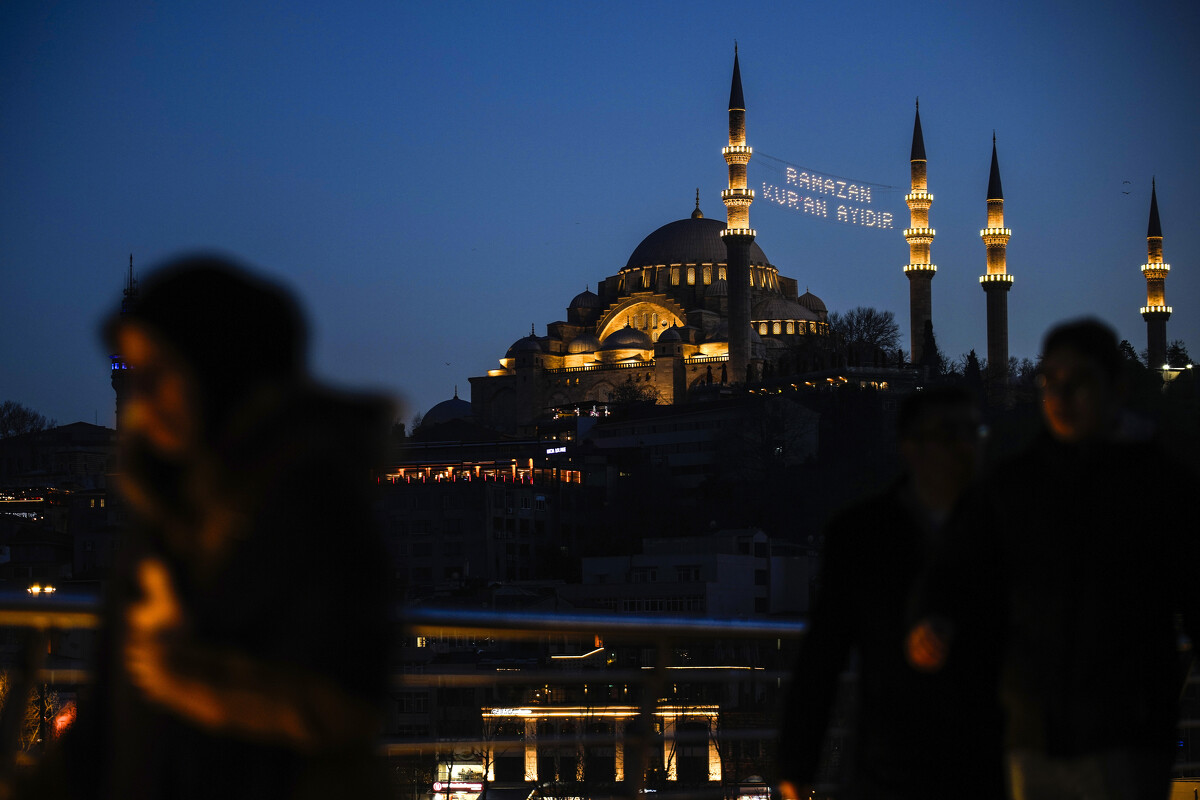
Lights message installed in between the minarets of the Suleymaniye mosque reads in Turkish "Ramadan is the month of Quran" ahead of the Muslim holy month of Ramadan in Istanbul, Turkey, Sunday, March 10, 2024. (AP Photo/Emrah Gurel)

Mahya master Cemil Buyurkan works in the installation of a lights message at the top of one of the minarets of the Suleymaniye Mosque in Istanbul, Turkey, Wednesday, March 6, 2024. Mahya is the unique Turkish tradition of stringing religious messages and designs between minarets. (AP Photo/Emrah Gurel)

Mahya masters, top right, work in the installation of a lights message at the top of one of the minarets of the Ottoman-era Sultanahmet mosque, or Blue mosque, ahead of the Muslim holy month of Ramadan, in Istanbul, Turkey, Tuesday, March 5, 2024. Mahya is the unique Turkish tradition of stringing religious messages and designs between minarets. (AP Photo/Emrah Gurel)